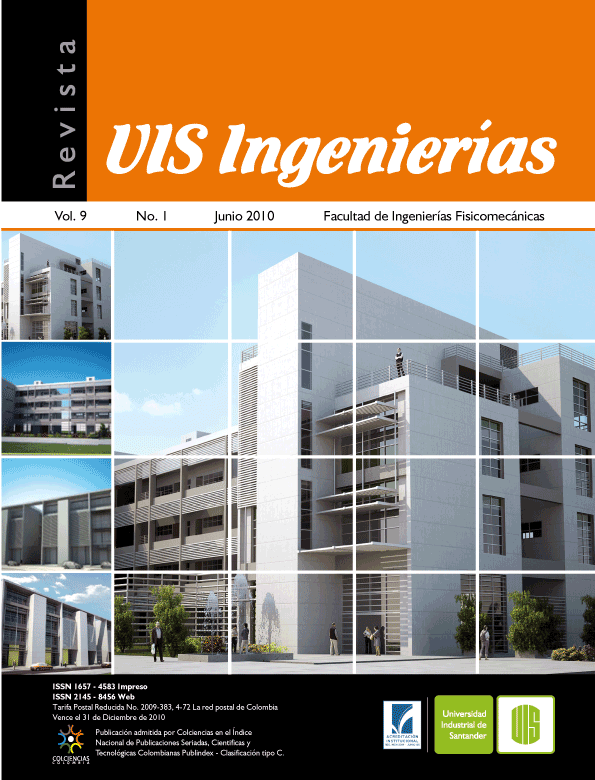Published 2010-05-26
Keywords
- Flexible rotors,
- dynamic of rotor,
- component synthesis,
- torsional flexibility
How to Cite
Abstract
This job shows a mathematical formulation in order to study the torsional behavior in a fexible rotor. The model starts calculating kinetic energy, potential energy and the Rayleigh dissipation function. From both, energy expressions and by means of the Finite Element Method, get the fnite element of a single disk. Integrating it, we can get the expression to the rotor element. Using the Lagrange Equations is possible deduce the equations system of movement in order to study the rotors dynamic including torsional behavior.The mathematical model has into account the main components of the system: First, the support structure whit its bearings, and secondly the rotative part. Both of them are modeled using different analytical technics, so it uses the component synthesis in order to introduce the behavior of the support structure where the rotor is grounded. The developed mathematical model calculates both, the model parameters stationary response and resolves the transitory state.
Downloads
References
J. Vinyolas, E. Vera, Análisis Dinámico de Rotores Flexibles Mediante el Método de los Elementos Finitos, II Congreso de Ingeniería Mecánica, Sevilla, 1993, pp. 122–128.
K. Cavalca, An Investigation on the Influence of the supporting structure dynamics of the Rotor System, Mechanical Systems and Signal Processing, Vol. 19, No. 1, 2006, pp. 157-174.
R. Green, Gyroscopic Effects on the Critical Speeds on Flexible Rotors, Trans ASME, Vol.70, 1984, pp. 396-376.
F. Ditemberg, “Vibrations of Rotating Shafts whit Randomly Varying Internal Damping”, Journal of Sound and Vibrations, 2005, pp. 759–765.
A. D. Dimarogonas and G. Massouros, Torsional vibration of a shaft with a circumferential crack, “Engineering Fracture Mechanics”, 15/3-4, 1980, pp. 439-444.
A. D. Dimarogonas and S. A. Paipetis, “Analytical methods in rotor dynamics, Applied Science Publishers”, first edition, London, 1983.
H. Sánchez and J. Pintor, “Modelo para la Simulación del Comportamiento Dinámico de Rotores Flexibles con Apoyos no Lineales Situados Sobre una Estructura No Rígida”, Anales de la Ingeniería Mecánica, XVI Congreso Nacional de Ingeniería Mecánica, León, Vol. 4, Diciembre de 2004, pp. 2547 – 2553.
M. M. Segura and J. T. Celigüeta, Cálculo de Frecuencias Propias Mediante Síntesis Modal con Subestructuras Multinivel. Revista Internacional de Métodos Numéricos para Cálculo y Diseño de Ingeniería. Vol. 7, No. 2, 1991, pp. 107–121.
J. M. Pintor Borobia, “Análisis de Comportamiento Dinámico de Bombas Hidráulicas Verticales utilizadas en Plantas de Energía”, [Tesis Doctoral]. Escuela Superior de Ingenieros, San Sebastián, 1993.
E. Vera, “Estudio Dinámico de Rotores Flexibles”, [Tesis Doctoral]. Universidad de Navarra, S.S. 1998.

